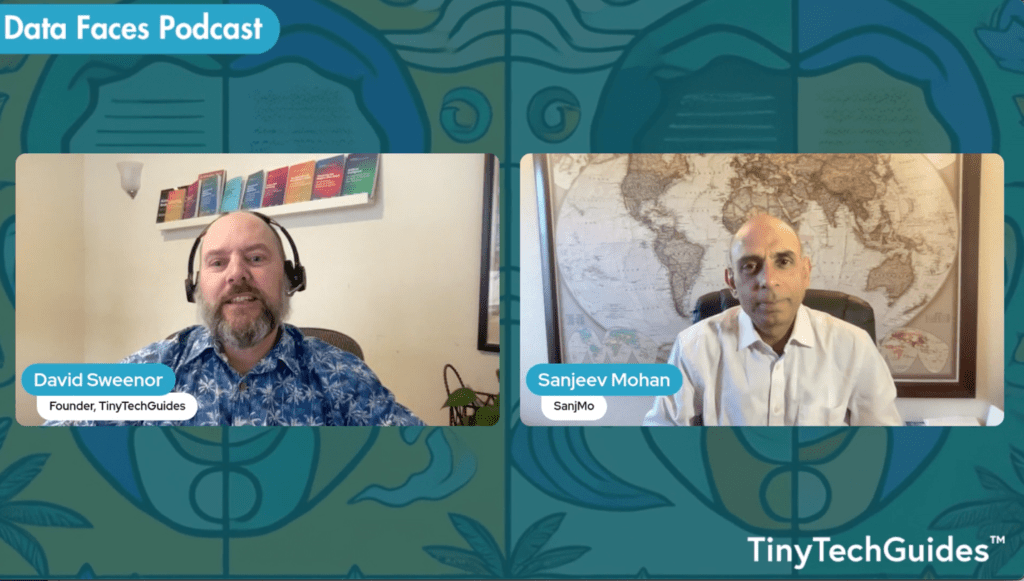Get Started with 8 Simple Steps
For many, depending on the age of the individual asking, the term artificial intelligence (AI) conjures up visions of HAL from Kubrick’s 1968 classic, 2001: A Space Odyssey, Arnold Schwarzenegger in The Terminator (1984), or Ava from Ex Machina (2014). For whatever reason, Hollywood is convinced that artificial intelligence (AI) will destroy humanity. Despite the naysaying, I have a more optimistic view of AI as it has the tremendous potential to help humanity.
For many business leaders I talk to, they understand the importance of data, analytics, and AI but they’re a bit confused about what AI actually means. Despite best intentions, AI seems just out of reach and unapproachable for many. Many leaders define AI as the ability for machines to think and act like humans. They believe that AI can interpret the world and make human-like decisions. In a sense this is partially true, but this definition is far too vague.
If you delve a little deeper, there are generally two broad categories of AI:
- Artificial General Intelligence (AGI) which can be “strong AI” or “general AI”- think HAL, The Terminator, and Ava.
- Artificial Narrow Intelligence (ANI) which is also referred to as “narrow AI” — think applying for a credit card or ordering a pizza via a chatbot online.
In other words, AGI is the technology of science-fiction and movies, while ANI is the technology of today. Business Leaders are using the power of ANI across all lines of business and industries. ANI is simply data, analytics, and automation technology used to solve specific tasks.
Examples of ANI in action include:
- Using chatbots and conversational AI to accomplish specific tasks like ordering a pizza or applying for a credit card.
- Using predictive analytics and machine learning algorithms to hyper-personalize offers and customer experiences in real-time.
- Applying computer vision and optical character recognition (OCR) to extract text data from receipts, tax forms, PDF and shipping documents to automate warranty claims or sift through data silos to select the right candidates for pharmaceutical trials.
- Using natural language processing (NLP) and text analytics to detect key themes and sentiment to understand the voice of the customer.
- Applying computer vision to automatically scan images and identify anomalies in medical images or manufacturing data.
No robotic apocalypse or sentient machines. Just, data, analytics, and automation. That’s it.
Examples of AI across line of business (LOB) functions include:
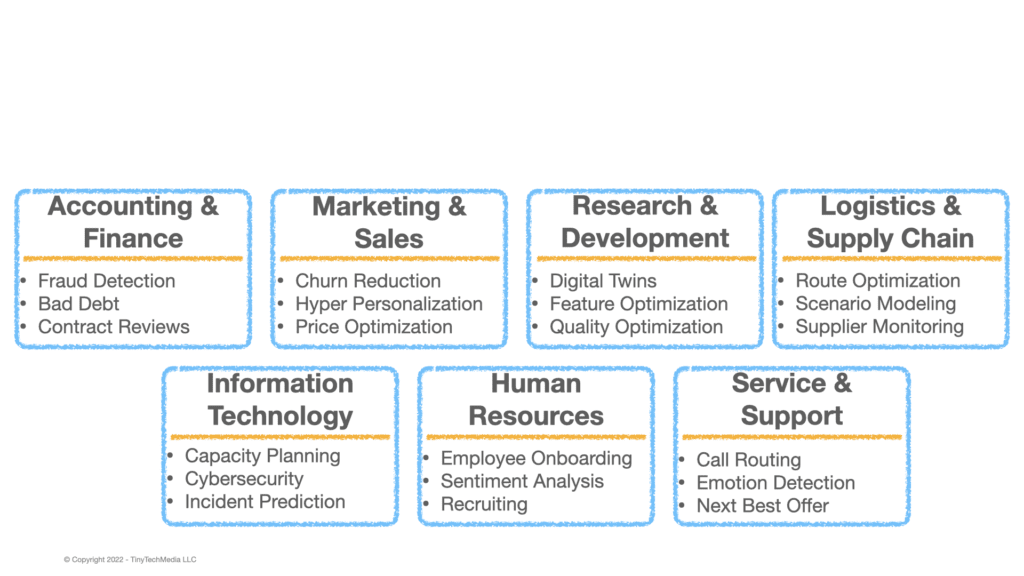
Over the years, there have been many definitions of AI as illustrated below.
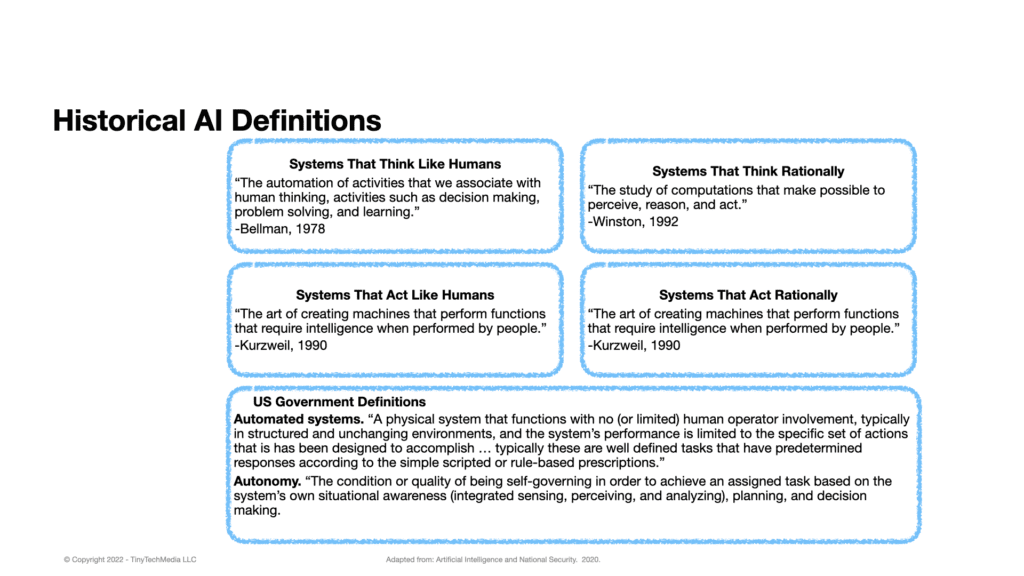
So, given the historical context and a high-level definition of how AI is applied, how can we create a practical definition of AI? In my mind, the definition of AI is quite simple.
Artificial Intelligence = Data + Analytics + Automation
Let’s start with data, data can take many shapes and formats such as transactional data from point-of-sale systems, events from equipment and machines, geospatial data, behavioral data, demographic data, text, image, and audio to name a few.
On its own, data is inert — it doesn’t react or do anything. Applying analytics and automation to data increases its value and makes it transformative.
Next, let’s look at analytics. Analytics can take many forms but the four broadly accepted categories include descriptive analytics (what happened), diagnostic analytics (why did it happen), predictive analytics (what is likely to happen), and prescriptive analytics (what should we do). Many organizations are applying analytics to gain insights from data, but this on its own is not enough. An example of an insight is that we expect a 20% increase in COVID-19 hospitalizations next month. This is a great insight but as a healthcare provider, how can I use this information? Do I need to order more medical supplies, increase staffing levels, or add more capacity (beds) to my facility? The analytic insights need to be applied to specific business problems to make decisons, that in turn, cause the business to take beneficial action.
If the business does not take action or change its behavior as a result of an AI based decision, why bother?
Lastly, let’s look at automation technology. It can take many forms but automation allows things to be done in a repeatable way. There are various technologies such as simple scheduling, robotic process automation (RPA), business process automation (BPA), business rules and decision management, chatbots and virtual agents, and robotics.
The figure below illustrates the data to insights action framework.
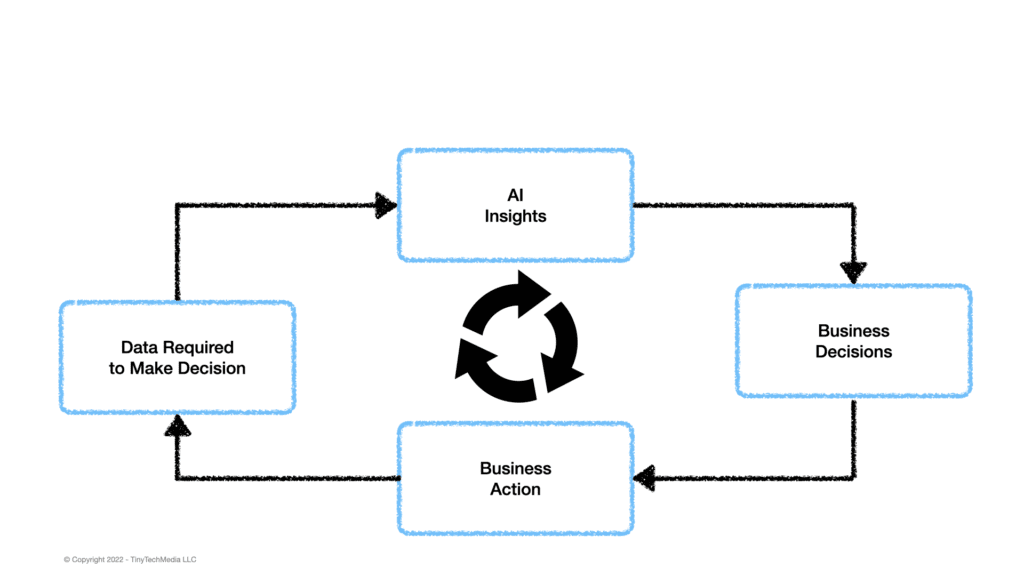
Now in order to transform this into AI, we need to leverage digital automation technologies. By fusing data, analytics, and automation together, we have successfully implemented AI. Now, theses systems can become quite complex and need to be monitored and governed, but nevertheless, the concept is quite simple.
The figure below represents a pragmatic definition of AI.
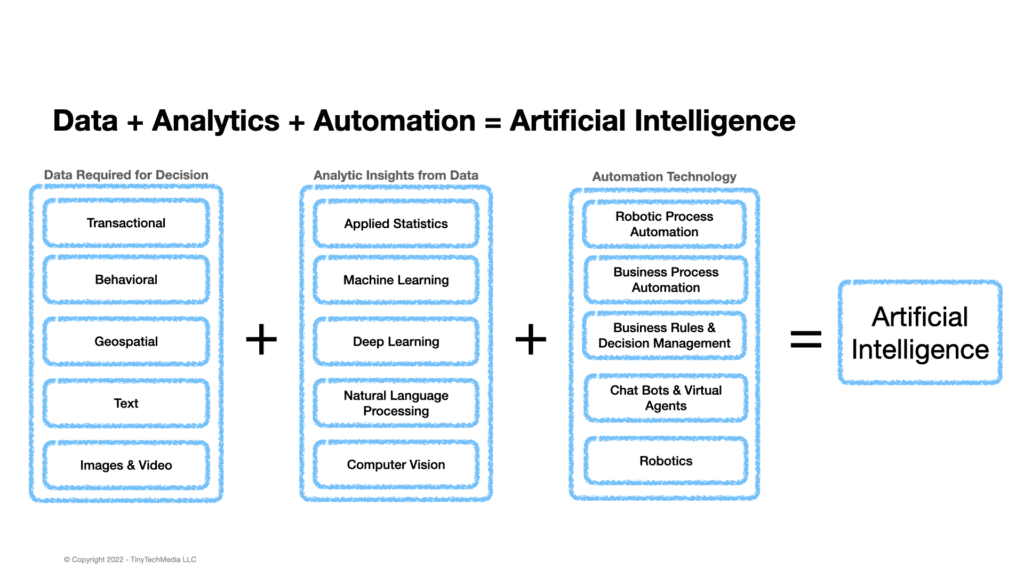
Now that we have a pragmatic definition of artificial intelligence, how does one get started? Top-performing companies have adopted the following practices to maximize their chances of success.[1]
- Align AI strategy and business goals
- Upskill employees for AI
- Collaborate cross-functionally
- Implement data governance
- Standardize and automate business processes
- Ensure adoption and value
Don’t try to boil the ocean with your first project, but do begin with something impactful.
To get started with AI follow these eight steps:
- Establish strategic business priorities, objectives, and key results (OKRs).
- Define, map, and prioritize specific projects for each initiative.
- Establish cross-functional teams to understand how technology can help achieve the stated business objectives.
- Establish project management and change management processes and plans.
- Understand the data required to make a business decision.
- Understand the analytic techniques required to make the decision.
- Partner with end users, domain experts, and business stakeholders and then iterate on a solution.
- Track progress, learn from failures, and celebrate successes.
As you can see, I hope this article has convinced you that AI is within reach for your business. AI is not the harbinger of doomsday, but rather, is used by smart businesses each and every day.
If you would like to learn more about how AI is applied across lines of business and industries, please consider supporting your local author by purchasing a TinyTechGuide. This book is meant to be read in 1.5 hours or less.
Artificial Intelligence: An Executive Guide to Make AI Work for Your Business
References:
[1]Cam, Arif, Michael Chui, and Bryce Hall. 2019. “Survey: AI Adoption Proves Its Worth, but Few Scale Impact | McKinsey.” Www.mckinsey.com.November 22, 2019. https://www.mckinsey.com/featured-insights/artificial-intelligence/global-ai-survey-ai-proves-its-worth-but-few-scale-impact.
Categories
- AI Trends (8)
- Analytics Leadership (9)
- Artificial Intelligence (52)
- Data Faces Podcast (4)
- Data Leadership (3)
- Marketing (17)
- Modern Data Stack (3)
- News (8)
- Tech News (1)
Latest Posts
- From “AI-Ready” to AI Reality: Why Actionable Data Strategies Beat Endless Planning
- Team Dynamics Over Technology: The Human Elements that Drive AI Success
- The Customer Hero Principle: Why Your B2B Messaging Falls Flat
- The Grandmother Test: Building AI Trust Beyond Technology
- Don’t Trust Your AI With Dates: The Calendar Blindspot

